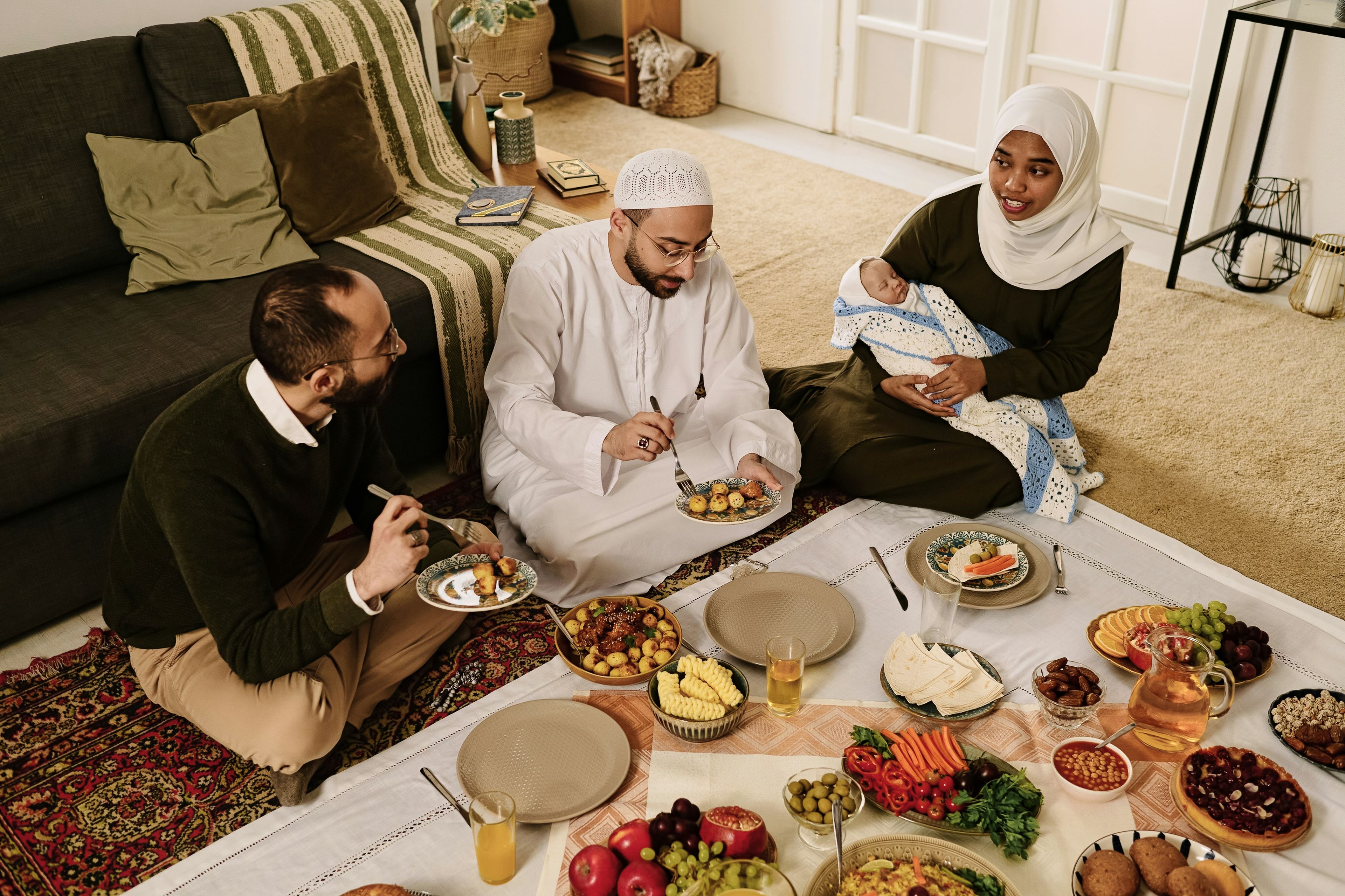How To Build A Family You Don't Need To Run Away From
Here’s a guide on building a family that feels like a haven rather than a repeat of what you hope to leave behind.
You’re reading this because you grew up in a dysfunctional family, it negatively impacted you, and you want to make sure you’re not creating a family system that you don't want to run away from.
Building a family that fosters love, support, and connection can feel daunting when you only know what you don't want. You may even be wondering if you have the skills to create this type of family or if you’re doomed to more of the same.
Building a connected and healthy family is possible, but it requires conscious effort, emotional investment, and an understanding of each member's needs.
Here’s a guide on building a family that feels like a haven rather than a repeat of what you hope to leave behind.
Your Family Needs Open Communication

Healthy communication is the cornerstone of a strong family. It’s important that each member feels heard, respected, and understood. Fostering an environment where everyone can express their thoughts and feelings without fear of judgment or criticism is essential.
How to do it:
- Practice and model active listening. This means giving your full attention when someone is speaking and showing empathy in your responses.
- Regular check-ins. Set aside time for family discussions, not just about problems but also about the positive things going on in each other’s lives.
- Encourage honesty. Make sure your family knows they can share their thoughts openly, even about difficult topics.
Quality Time Is Important
In today’s world, everyone is so incredibly busy. Quality time is essential to creating a family that enjoys spending time together.
How to do it:
- Family traditions and rituals. Whether it's a weekly movie night, Sunday dinners, or annual trips, create rituals that give everyone something to look forward to.
- Be in the moment. When you're together, minimize distractions like phones or television.
- Celebrate achievements and milestones. Recognize each other’s accomplishments, big or small, to reinforce a sense of shared pride and belonging.
Create Mutual Respect
A genuinely thriving family is built on mutual respect. Every family member should feel valued for who they are, regardless of their age, role, or personality. This respect extends to giving space, maintaining boundaries, and acknowledging each other’s individuality.
How to do it:
- Respect differences. Each family member is unique, with their own quirks, preferences, and perspectives. Embrace diversity within the family and avoid trying to change each other. You can do this by trying to get to know each other and participating in each other’s interests.
- Model respect. Parents or other adult family members can set the tone by demonstrating respect in their relationships, whether it’s in the way they talk to their children or how they handle conflict.
- Teach empathy. Encourage your family members to put themselves in each other's shoes. Misunderstandings can become opportunities for deeper understanding rather than sources of tension.
The Way You Handle Conflict Is Everything
Disagreements and misunderstandings are inevitable, but how a family handles conflict can make all the difference. Instead of letting arguments fester or resorting to emotional outbursts, focus on resolving issues in a way that strengthens relationships rather than damaging them.
How to do it:
- Stay calm. It's easy to react impulsively in the heat of the moment. Work on your calming techniques when things are not as tense so you can use them when things get challenging.
- Focus on the issue, not the person. Avoid personal attacks or blame games. Frame disagreements around behaviors or situations rather than making it about someone’s character.
- Seek solutions, not just empty apologies. Aim to resolve the problem together rather than focus on who’s right or wrong. This fosters collaboration and a sense of teamwork.
Encourage Individual Growth And Let People Be Themselves
A family should be a space that nurtures collective happiness and individual growth. Family culture gets disrupted when one person’s needs and desires are constantly and consistently prioritized over everyone else’s in the family. Each person in the family has their own dreams, aspirations, and needs. Supporting each other’s personal development strengthens the family as a whole.
How to do it:
- Recognize achievements. Celebrate each family member’s successes, whether it’s academic, career-related, or personal growth. Celebrate what is important to each member, not only what you deem important or worth celebrating.
- Give space. Allow each person to be themselves, and don’t take it personally when they need time.
- Offer support. Be there to offer guidance, encouragement, and resources when needed, without pushing someone in a direction that doesn't align with their values.
Create A Culture Of Gratitude

It's easy in a family to focus on what’s not working rather than appreciating what is. By cultivating a culture of gratitude, you help shift the focus from complaints and negativity to an atmosphere of appreciation and positivity. This will also help each member of the family feel appreciated and seen.
How to do it:
- Practice gratitude together. Consider creating a daily or weekly family practice of sharing things you're grateful for. This could be as simple as expressing appreciation for each other.
- Focus on the good. Highlight the positive attributes and actions of family members.
- Celebrate small wins. Acknowledge even the smallest victories to keep the family environment uplifting and encouraging.
Stay Flexible
Every family evolves, and life circumstances change over time. One of the most important traits of a healthy family is the ability to adapt to new situations, challenges, and phases of life.
How to do it:
- Be open to change. As children grow, as careers shift, or as new family members are added, the family dynamic will naturally shift. Embrace these changes and adjust expectations accordingly.
- Revisit family norms. Family rules, routines, and roles may need updating from time to time. Discuss these changes openly and involve everyone in decisions about how the family operates.
- Be Patient. Growing together takes time. Be patient with the process of adjusting to new phases in life and family structure.
Teach And Model Resilience
Life isn’t easy, and teaching your family how to navigate challenges with resilience can be a powerful tool for staying connected during tough times. Resilient families support each other through difficulties, using challenges as opportunities to grow stronger.
How to do it:
- Encourage problem-solving. Instead of shielding your family from difficulties, work together to find solutions. This builds confidence and a sense of agency in each family member. Teach problem-solving skills based on each person’s developmental age, skill set, and abilities.
- Model resilience. By handling your own challenges, you can show your family how to manage stress, setbacks, and disappointments.
- Maintain hope. In tough times, remind each other of the bigger picture and reinforce the idea that tough times don’t last, but tough families do.
Building a family you don’t want to run away from is not about perfection — it’s about fostering connection, mutual respect, and support. It’s about creating a space where everyone feels seen, heard, and valued. Families grow stronger when each member invests in nurturing those bonds. The effort may take time, but the result is a family that’s not only functional but a source of deep comfort, joy, and lifelong connection. You are not doomed to repeat what you know.